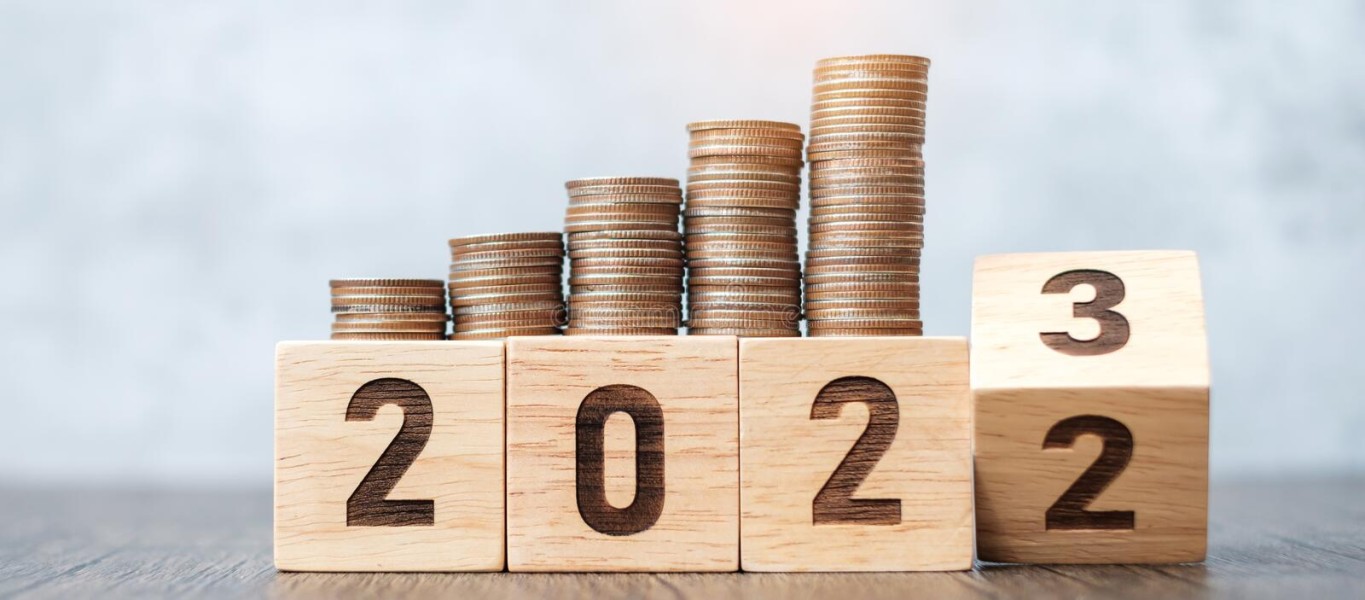|
Getting your Trinity Audio player ready...
|
By Oghenerukevwe Odjugo (Finance Professional | LinkedIn Top Voice in Finance and Economy)
2022 did not start with the excitement and promise of 2020, nor with the relief of the end of COVID as 2021 did. While 2020 and 2021 were tumultuous years, investors were largely a lot richer than they were at the turn of the decade. 2022 was the year the shoe was going to drop, and boy did it DROP.
2022 was 1 of 5 years in the last 100 years where both US Treasuries and the S&P 500 finished in the red. Whether you were a conservative investor with a portfolio of the highest quality bonds, or an aggressive investor with the most “disruptive” tech stocks and cryptocurrencies, you are nursing losses.
Stock and Bond Markets shed more than $30 trillion in market value this year alone. The crypto ecosystem lost over $2 trillion in market value. Elon Musk became the 1st person ever to lose $200 Billion. But let’s go back to January before we go into January tomorrow.
January
In hindsight, January was a very calm month. The US Federal Reserve was planning to raise interest rates only 3 times in 2022. The market believed that plan. But as the month went on, the market raised their prediction to 5 rate hikes.
Microsoft announced it would be acquiring Activision Blizzard, the company behind games like Call of Duty and Candy Crush, for $68.7 billion to expand its game library. We later learned that Warren Buffett’s Berkshire Hathaway bought Activision Blizzard shares in the quarter, as a merger arbitrage move (brilliant move).
We all thought the deal would sail through smoothly since the Federal Trade Commission (FTC) doesn’t particularly dislike Microsoft, not like Meta or Google at least. The FTC stepped in to block the transaction on competition grounds in December. Will this deal be completed in 2023? Only time will tell
February
January’s 7.5% inflation rate was the highest the US has seen since mid-1982. The S&P fell 3% this month, extending its losses Year To Date (YTD) to 8%, and entering correction territory for the first time since the start of the pandemic. By the end of the month, the tech-heavy Nasdaq was down 12% YTD.
Russia started its war on Ukraine, which would ultimately send oil and gasoline prices to multi-year highs along with food commodities such as grain. The war exacerbated fears about inflation and sent stocks crashing.
March
US stocks got some relief. The S&P rebounded 3.7%, the Dow rose 2.5%, and the Nasdaq rose 3.5%. The Fed raised interest rates as promised by 25 basis points (bp) or 0.25%.
The S&P and Dow ended the quarter down more than 4% each and the Nasdaq down 9%, marking the weakest quarter since Q1 2020.
Stock splits became the thing of the quarter with Alphabet, Amazon, Tesla (for the 2nd time in 2 years), and Gamestop announcing stock splits in Q1 2022.
April
US inflation hit fresh highs of 8.5%, driven by higher fuel prices. March/April was that time when yesterday’s pump price was never today’s price. This prompted the Fed to signal a 50bp (0.5%) increase would happen in May, double the March hike.
Netflix reported a net loss of 200,000 subscribers in Q1 2022, the first quarterly decline in subs since 2007, and was the worst-performing S&P 500 stock from January to April, down almost 65% YTD.
Elon Musk agreed to buy Twitter for $44 billion. Emmanuel Macron was reelected President of France.
May
The S&P 500 fell into bear market territory. The Fed kept its promise and increased interest rates by 50bp, the largest hike since 2000, and signaled more was to follow. WTI oil price crossed $115 a barrel after the EU proposed banning all crude imports from Russia by the end of the year as a punishment for Moscow’s aggression in Ukraine.
Not-so-stablecoin Terra Luna crashed.
Tightening June
Central banks started following the US’ lead in raising interest rates.
The Fed hiked rates by 75bp (0.75%), its largest increase in 28 years, after inflation rose to a 40-year high, and signaled more to come. Central Banks in the UK, Sweden, Australia, Canada, Nigeria, and many other countries also raised rates. While the European Central Bank (ECB) ended its quantitative easing program and indicated that it would lift interest rates in July.
The Bank of Japan sat this rate-tightening cycle out, electing to maintain its very accommodative monetary policy, which resulted in the yen falling to its weakest level since 1998.
UK Prime Minister, Boris Johnson, survived a party confidence vote in the wake of the ‘Partygate’ scandal, and the EU formally awarded Ukraine official candidate status. The cryptocurrency market saw its total market cap drop to $980bn
Not Recession July
US GDP contracted for the 2nd time in a row by 0.9% in Q2 2022, entering a “technical recession”. However, the National Bureau of Economic Research (NBER) – the body charged with formally announcing recessions – did not pronounce a recession.
The Fed hiked interest rates by 75bp (0.75%) for the 2nd time, but chair Jerome Powell signaled that a slowing in the pace of increases may be necessary going forward. However, that (partial) easing did not come until December.
Fears that Europe was on the path toward a deep recession dragged the Euro (€) down to below parity with a rapidly strengthening US dollar for the first time in almost two decades.
Boris Johnson was forced to resign after news broke that he appointed a politician accused of sexual misconduct.
Bitcoin managed to rally above $22,000 on hopes that the Fed would stop raising interest rates aggressively. US, European and Japanese stocks closed the month higher.
August
Investors came into August hopeful the Fed would slow the pace of rate hikes which cause stocks to rally. Then, Fed Chair, Jerome Powell indicated in a key speech in Jackson Hole that policy will remain tight for “some time,” and inevitably lead to “some pain” for households and businesses.
This sent US stocks down. Tech stocks – big beneficiaries of the era of near-zero borrowing costs – were particularly hard hit. Big players like Google-parent Alphabet, Amazon, Microsoft, and Tesla all fell by more than 6%.
Inflation in the Eurozone jumped to a fresh record 9.1%. Meme stocks saw a resurgence with small-cap IPO stocks
September
Wall Street had its worst month since the early days of the pandemic.
The Fed raised interest rates by 75bp for the 3rd consecutive meeting and suggested that interest rates would remain higher for longer. Powell said that it was still unclear whether these rate hikes would lead to a recession or, “if so, how significant that recession would be”.
The ECB also raised rates by 75bp, bringing its benchmark deposit rate to the highest since 2011. Inflation in the Eurozone remained stubbornly high, touching a fresh record of 10% in September.
Ethereum completed the merge.
Liz Truss was appointed as the UK’s new Prime Minister.
Her tenure was almost immediately filled with controversy. Her government’s mini-budget, which included energy subsidies and unfunded tax cuts, sent UK sovereign bonds slumping and the Pound (£) plunging to its lowest level against the US dollar since 1985.
The Bank of England was forced to intervene days later to keep this dramatic fall from damaging deeply-exposed pension funds and impacting the country’s broader financial system. This signaled to financial markets that even if Central banks are fighting inflation, they will be willing to put that fight on hold to support the economy.
Britain’s longest-reigning monarch Queen Elizabeth II passed at 96.
Tech Layoffs October
Tech layoffs were the flavor of the month with a layoff announcement every other day. Stocks entered rebound mode. All MAMAA companies (Microsoft, Apple, Meta, Amazon, Alphabet) except Apple delivered quarterly reports that fell short of Wall Street estimates causing their stock prices to fall and losing almost $1 trillion in market value.
Warner Bros. launched NFT movies
Rishi Sunak became UK prime minister and Liz Truss became the shortest-serving UK prime minister in modern history.
Elon completed his Twitter purchase and took the company private.
November
Stocks continued to win favor among investors in November, delivering back-to-back monthly gains for the first time since 2021.
The Fed still delivered another 0.75% interest rate, shattering investor expectations for a Fed pause. Jerome Powell warned it was much too soon for the central bank to think about pausing.
However, on the final day of November, Powell delivered a speech that set up expectations for a slower pace of rate hikes but also warned that the job of lowering inflation was far from over.
But markets weren’t willing to buy into Powell’s higher-for-longer rates regime instead choosing to focus on expectations for smaller hikes ahead, investors began to bake in bets on a rate cut in the second half of 2023.
The story for cryptocurrencies was different. Panic was breaking out, FTX crashed.
December: The 2 to 10-year Treasury yield curve saw its biggest inversion in about four decades, increasing concerns about a potential recession in 2023.
Investors believed that the Fed, faced with the growing threat of a recession, would confirm market expectations for rates to peak sooner rather than later with a cut to follow next year, but the Fed did not budge.
The Fed forecasted that interest rates will ultimately peak at a higher-than-anticipated 5.1% as it delivered its final and 7th overall interest rate hike of the year of 0.5%.
Powell reiterated that the fight against inflation remained the priority and a higher-for-longer rate regime was the new normal.
Was all of that this year? Yes, yes it was!
The quote of the year was
“Only when the tide goes out do you discover who’s been swimming naked” Warren Buffett
Bitcoin started the year at $47,733 and ended at $16,500 nosediving almost 65%. Many cryptocurrencies filed for bankruptcy. Stocks are down anywhere from 20-99% with little hope for recovery next year.
However, it wasn’t all bad. Some energy stocks this year could have doubled your money. Higher interest rates mean higher rates for money in savings accounts.
Final Thoughts
The theme of the ’20s so far has been forced expertise.
2020 turned us into health experts learning about pandemics and the miraculous power of bleach and hydroxychloroquine.
2021 turned us into stock experts learning about short squeezes, bull markets, and bubbles.
2022 turned us into economic experts casually throwing out words like inflation, interest rates, and recession in everyday conversation.
What will 2023 force us to learn?
While I think 2023 holds some trouble for financial markets, I think we might end the year better than we did in 2022. At least with more certainty on a lot of things.






